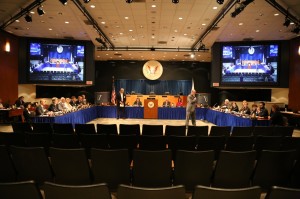By Leah Walton
By now, you likely have your New Year’s Eve plans in place. Maybe you’ll go to a big party. Perhaps you’ll meet friends at a local bar or host a small gathering at your house. Maybe you’ll just spend a quiet night in. But whatever your plan may be, if it involves alcohol or other drugs, it should also involve a sober ride home.
Most of us know someone whose life has been impacted by an impaired-driving crash. These accidents occur at an alarmingly high frequency and yet, they’re totally preventable.
Data show that impaired-driving crashes occur more frequently over weekends, on holidays, and at night. This New Year’s holiday falls on a weekend, making it likely that we’ll see a higher-than-usual number of impaired-driving crashes—a very tragic start to 2017.
 According to a recent report by the National Safety Council, we can expect to see more than 360 crash fatalities over this 3-day New Year’s holiday period. According to a report by the National Highway Traffic Safety Administration, about 40 percent of all fatalities during the Christmas and New Year holiday periods have occurred in crashes in which at least one of the drivers was alcohol impaired. That means that approximately 145 people could be killed from drunk driving over this New Year’s weekend.
According to a recent report by the National Safety Council, we can expect to see more than 360 crash fatalities over this 3-day New Year’s holiday period. According to a report by the National Highway Traffic Safety Administration, about 40 percent of all fatalities during the Christmas and New Year holiday periods have occurred in crashes in which at least one of the drivers was alcohol impaired. That means that approximately 145 people could be killed from drunk driving over this New Year’s weekend.
Let’s not accept this gloomy statistic.
On the eve of 2017, there really are no excuses to operate a vehicle while impaired, or to travel in a vehicle operated by an impaired person. The truth is, impairment starts with the first drink. With the ability to easily find a ride with a few swipes of our phones, and the wide availability of public transportation and sober ride programs on nights when drunk driving crashes are at their highest, there’s no reason for anyone to drive impaired.
Since the 1980s, transportation safety advocates have been working tirelessly through education programs, increased enforcement, strengthened legislation, and emerging technology, such as breathalyzers, to stop impaired driving. And, without a doubt, improvements have been made. In the early ‘80s, more than 21,000 people were killed each year as a result of alcohol-impaired driving. In 2015, that number was down to about 10,265. Lives have been saved because of improvements in safety culture and safety technology.
However, even with that improvement, every impaired driving death is still unacceptable, because, in the end, it’s a decision, not an accident.
No one goes out on New Year’s Eve expecting to die or be injured in an impaired-driving crash. New Year’s Eve is about celebrating the close of one year and welcoming the hopes of a new year ahead. Everyone has the ability to experience the new year when they make plans to get home safely, whether that means driving sober or designating a sober driver.
 It is our hope at NTSB that everyone will make it home safely and that no one will have to start the new year off with a phone call that a loved one was killed in an impaired-driving crash. Let’s prove the statistics wrong, because, nowadays, there really are #NoExcuses for driving impaired.
It is our hope at NTSB that everyone will make it home safely and that no one will have to start the new year off with a phone call that a loved one was killed in an impaired-driving crash. Let’s prove the statistics wrong, because, nowadays, there really are #NoExcuses for driving impaired.
Leah Walton is a safety advocate in NTSB’s Safety Advocacy Division.



